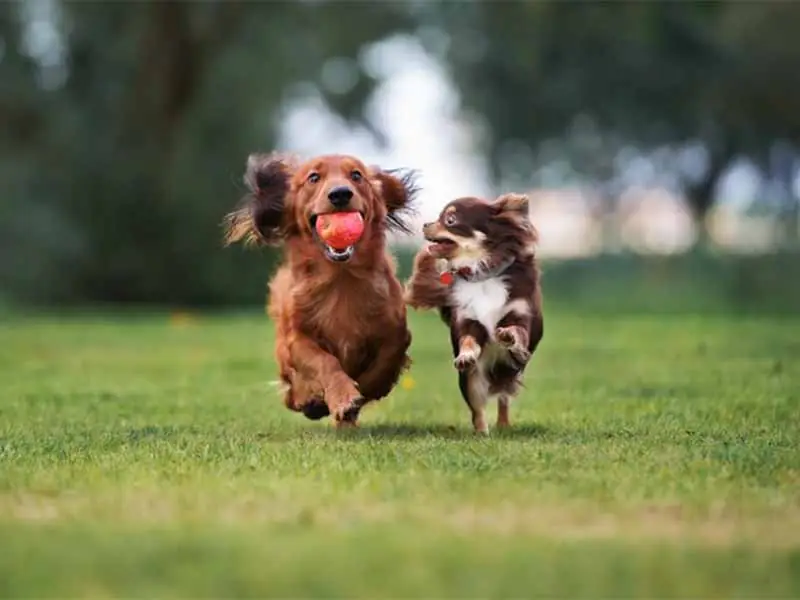Which small Dog is easy to train in India?
.jpeg)
A good training dog learns your rules, with a breed known for its high trainability makes it easier. If you looking for a smart dog, pays attention to yourself, and are strongly want to do something. Working dogs or hunter dogs were trained to watch your every order, trained dogs are smart, and some dog breeds are easier to train than others.
Toy Poodle
Toy Poodle is one of the intelligent small dogs. These lovable little furballs were trained for hunting. Poodles are intelligent dogs for loving and loyal with a mischievous side. They love to play and are strongly wanting to do, to please their owners because they like humans.
There are three different poodles - standard, miniature, and toy, they are almost the same in personality. Like any dog, poodles need to be trained. Poodles need some of the pieces of training like crate training, house training, order training, and leash training.
Crate training is very helpful for house training, proper crate training allows your dog to feel a safe place when they feel tired or nervous - like having a bedroom. Crate training should be the first training when you get your poodle.
House-training your dog needs patience, commitment, and lots of work in the same way, teaches that there are times to eat, times to play, and times to do their own business. A puppy can control its bladder for one hour every month of age. If your puppy is two months old, they can hold it for two hours. Don't go longer than this between bathroom breaks or they're guaranteed to have an accident.
Take your puppy outside at least every two hours and when they wake up, after playing, after eating, or after drinking. Pick a bathroom spot outside, and always take your puppy (on a leash) to that spot. While your puppy is relieving itself, use a particular word or sound used to remind them what to do
Put your puppy on a regular feeding schedule. Depending on their age, puppies need to be fed three or four times a day. Feeding your puppy at the same time each day will maintain accurate times also, making house-training easier for both of you.
Pick up your puppy's water dish about two and a half hours before bedtime to reduce the chance, they need to relieve themselves during the night. Most puppies can sleep for about seven hours without a bathroom break.
If your puppy wakes you up in the night, don't make any deal, otherwise, they will think it is time to play and don't want to go back to sleep. Turn on as few lights as possible, don't talk or play with your puppy, take them out and then return them to bed.
Rope your puppy's nearby piece of furniture with a six-foot leash when you are not actively training or playing. Watch signs that your puppy needs to go out. Some signs are, such as barking or scratching on the door, sitting with one's knees bent and one's heels close to, restlessness, sniffing around or circling. When you see these grab the leash and take them outside to their bathroom spot.
Keep your puppy on a leash in the yard, during the house-training process, the yard should be treated like any other room in your house. Give your puppy some freedom in the house and yard only after they become reliably house-trained.
Potty training Put your pup on a leash and take him out. Encourage him to explore the area, he picks up the scent and goes potty. Be sure to give him a treat.
Chihuahua
A Chihuahua who lives and breathes for his owner only and does not know the world around him and sometimes comes off as aggressive or unfriendly. Teach an older Chihuahua to be friendly, just may take more time, for the older guys because they are set in their ways and need to learn new behaviors.
Start training your Chihuahua to be friendly as you bring him home. Be sure to talk with people as well as with other pets. Be firm and tough and match up with his training. Your Chihuahua can be friendly to people and other animals. Keep your dog training sessions short with lots of rewards.
Start the basics to get him, to sit and lie down on your command, cute tricks like standing on posterior legs, rolling over, or begging. Little dogs can learn fun tricks that will give them positive attention when (sang, danced, acted, etc., in front of people).
Do not let your Chihuahua free feed. Provide his meals to him on a set schedule. A big deal out of preparing is meals and setting them down at mealtimes.
If possible, train your Chihuahua to stand back away from you when you are preparing the meal and putting it in place. You can train the 'wait' command to help with this.
When your dog is in training to be a good social dog, keep him off your couch or bed. Give him a comfortable bed near you but down on the floor under your command. Be sure to admit him with some treats and a calm tone when talking.
Dachshunds
Dachshunds, sweetly known as 'wiener dogs,' are little dogs with big personalities. Dachshunds are playful, sweet, and full of energy. Dachshunds were trained to be independent and think for themselves, dachshund's deliberate nature of an act may be very hard to train, but be patient with him a well-trained.
When bringing your Dachshund puppy home, it takes a few days or a few weeks to feel comfortable in your home before beginning training. Keep a close eye on your puppy as he explores his surrounding conditions. Puppy-proof each room involves removing or hiding electrical cords, keeping medicines and household cleaners out of reach, and picking up children's toys.
Start training your puppy early. The earlier you start your training is better for your new puppy. Dachshund puppy when he is 8 to 12 weeks old, around 8 weeks of age, a puppy will have been slowly reduced dependence on his mother, and he will be ready to start experiencing and interacting with the world around him. Give the puppy appropriate chew toys when the puppy needs to chew something. This teaches him to redirect his chewing behavior to appropriate objects.
Dachshunds can be very hard to housetrain. Training your Dachshund to go to the bathroom outside is very important, so be patient with him as he learns where he should go for the potty. It may take at least weeks to housetrain him properly. House training your Dachshund will be easier if you have already crate trained him.
Papillon
The Papillon dog training highlighted here includes housebreaking, leash training, verbal commands, and quality where all rules and orders are followed. This small dog has a huge personality and smarts to match this combination of training this breed much easier than some of their dog partners.
Papillon pet is a dream to train, there is one very important training that Papillion’s struggle with housebreaking. This will be the first and hardest training experience that you and your Papillon will experience.
The most efficient way to housebreak a Papillon is a consistent feeding schedule. As soon as the Papillon has finished eating, take him or her outside to a selected potty area and cheerfully speak an action word like "potty". If no potty action happens within 10 minutes, take the dog back inside and watch closely for "have to go" signs (i.e. sniffing the ground, circling, etc.)
Begin leash training with a soft harness when your Papillon begins to pull or run away, begin walking in another direction. Every time he or she changes the direction with you or follows you, offer a treat reward.
Papillon training exercises daily until it happens naturally and automatically. Papillons have their advantage and disadvantage and what may be an advantage to one person could be a disadvantage to another person. Papillon is very easy to train because of their thinking ability and wants to please, that loving nature does mean that you will need to keep them near you.
Pembroke Welsh Corgi
Corgis are intelligent dogs, they also need to be physically active. Fetch is an easy way to get Corgis moving. "Corgis naturally love to fetch. They like to do as soon as they're introduced to it and train to it," said Fetch.
The real reason why to teach fetch is that one of the health issues in Pembroke Welsh Corgis is being very overweight. They're very good eaters, but there's not a lot of places to put all that desire to eat they have got. They often are too fat and too heavy. If Corgis can play fetch a ball, they can get exercise and help maintain their weight.
Before entering your home Corgis should be crate-trained or housebroken, these are important steps in puppyhood. To avoid unwanted accidents, always potty train your pup. Crate training is an important part of housebreaking puppies, as dogs don't like to soil where they sleep.
Corgi puppies are very smart. They are very clean and they will do what you want to do. And they are very easy to crate train, to said Bowes. While Corgis puppies may wet the crate, they rarely poop in it.
Corgis need a lot of mental stimulation, be prepared to keep them both physically and mentally active. Since they also experience likely to get very overweight, regular exercise routines in addition to a few daily walks will help keep them healthy. Training classes and dog sports are great ways to keep Corgis healthy.
Beagles
Beagles are friendly, sweet, and socially confident dogs that make great family pets. If you don't have other dogs, Beagles think about you and your family. They are an easy-going breed, Beagles tend to be a little very hard to train. Start with creating an indoor condition that's good for training. At 8 weeks, start training your Beagles to eliminate outside.
It's important to start training as early as possible. At 8 weeks, medium-sized dogs can start being house-broken. If you've adopted an adult medium-sized dog, they still need house training, make sure you get started training as soon as you bring your new pet to the home. Medium-sized dogs under 8 weeks of age should be continued to use indoor puppy pads and paper until beagles reach the appropriate age to go outside. Before taking Beagles outside should be up to date with vaccinations, where other dogs and wildlife have been.
Create a selected elimination area for Beagle, make sure the selected area is easy to get to in all types of weather and located in commonly used areas. Taking for walks, don't allow your medium-sized dog to potty anywhere when you're walking along.
Visit their selected area before and after so they know this is where Beagles should always eliminate. Get a 6 ft. (1.8 m) leash for your Beagle, with a soft handle so you can slip over your wrist or through your belt loop, make sure to use a harness with your leash, not a collar, to prevent neck injury.
Take your medium-sized dog out as soon as it wakes up in the morning and after naps throughout the day. Lead your puppy outside for 20 minutes after each meal.
Bring your medium-sized dog outside one last time right before you go to bed. Once the Beagle puppy learns to go out, you can change one thing to another to a schedule that matches its age. A 3-month-old Beagle should go outside every 3 hours. Continue the same until about 6 months.
Use gates to block off larger areas of your house/room, Indoor cages are smaller spaces, because Beagle has the dirty or untidy habit to hold within. Think about buying a pen that can be expanded as your puppy grows.
Place your Beagle's food and water bowls inside the contained area, along with his favorite toys. If you're using an indoor pen, place puppy pads on all available floor space outside of the food and water area.
Labrador Retriever Puppy
Labrador Retrievers are the most popular breed of dog in India, Labradors are known to be friendly gentle dogs that are easy to train. They come in three colors: black, chocolate and yellow. Labradors are high-energy animals, especially those developed to work, hunt, and run all day, they are highly trainable, Labradors are many times used as guide dogs, for search or rescue missions, and also by police groups for drug detection. They also make wonderful family members.
For young puppies (8 to12 weeks old) training sessions are short. For example, when you bring your puppy home, take him to the toilet spot in the garden, reward him with some dog treats and encourage your puppy when he uses them.
Simple training is spotting about to sit anyway, and when his hind leg hits the ground, saying "Sit". May be confused at first, but soon he'll understand the word and the action. Keep pouch treats, that's why you can immediately reward your puppy when they do something good. Giving treats as a reward to encourage, should be used only as a starting measure.
Treats should be replaced soon, otherwise, the dog may become overweight or very overweight. In a different way, also you could weigh out your dog's daily food, and freedom to move within limits out and then set aside a small number of days for use as treats. This way helps to prevent your
Labrador from putting on weight with the training you are doing.
Make sure that, what you need to train your dog. Purchase a clicker if you're planning for clicker train as well as if you need the proper collar and leash for general training.
A leash should be five to six feet in length. Leather leashes are the best leash for training. Always check your equipment for your Labrador Retriever Puppy to make sure it is in good order and not responsible for snap or break. Choose the right time for training your Labrador Puppy before a meal, so the dog will be very interested to earn those tasty treats.
Maltese
Create an area for Maltese puppies inside the house. If the puppy is allowed free rule in the house, one of the fastest routes to housebreaking disaster. The puppy will pee and poo everywhere, not only making this your house a mess, but each act of going in the wrong area is also a step in the complete opposite direction of where you want your Maltese to be going.
Until your pup is 100% trained, should be doing his business either outside or inside but contained to pee-pads. There are several types of methods, set up a little area for your Maltese.
Never use a crate for your Maltese puppy, metal or plastic crates are restricted, and can be very afraid of being inside a small space for a dog of any age.
Gates are an option, including gating off a room or a section of a room, there are some advantages and some disadvantages to this. If a Maltese has a full room to roam, this issue is allowing a dog-free rule.
There are a few hints and tips to make you and your puppy's life a little easier. Small dogs feel much more comfortable in the garden area. Make confirmed that your fences and gates should be soundproof and escape-proofed, a small curious puppy may squeeze through a small space.
Feeding Bowls in plastic is not recommended, Stainless steel is the best investment for very young puppies it can be washed. From 5-6 months Maltese has Portmeirion & Denby rice bowls, Don't forget dogs must have fresh water all the time, strong and bigger bowls with a larger base so they don't move when in use.
Collars and Leash never invest too heavily as the puppy grows too big with it. Suggest buying leather or padded nylon leash, in soft leather. It is personal taste in choosing what is right for your Maltese.
Bed probably the plastic-type is the best under 6 months old because they liked to chew it. The bed should be cleaned easily and washed easily and raised beds with washable bedding. Safety makes sure all plugs and leads and trailing wires has hidden. It only takes puppy seconds to munch through a cable, it might be a deadly result.
Feeding the puppy try to feed him in his playpen or a crate so, he feels like something pleasant and not a punishment. Food the breeder will supply the puppy with food including a diet sheet with a suggested meal, there are different types of food available in the pet shop.
Dry Food this is a complete food and must be a constant supply of fresh water available at all times to prevent dehydration. Wet Food comes in different packages tinned, pouches, in small, medium, and large, sweet baked snacks can be added. Raw Food is Frozen and needs to be stored in the freezer and will require defrosting. Most companies do home delivery.
FAQS
Which is the easiest dog to train in India?
The Labrador retrievers are the most popular dog breed all over the world and as well in India. Labradors are easy to train, friendly, and smart dogs.
Are small dogs easier?
A smaller-sized dog is easier to handle and manage. You can pick him up when you need to, and take him traveling with less hassle than a medium or large dog. Without any concern about coat type, they are easier and faster to groom.
What Are the Cutest Dog Breeds?
French Bulldog.
Beagle.
Pembroke Welsh Corgi.
Golden Retriever.
Dachshund.
Bernese Mountain Dog.
Yorkshire Terrier.
Cavalier King Charles Spaniel.
.jpeg) Published By:
Published By: Admin
Published On: 9-June-2021

 0
0 



.jpeg)





